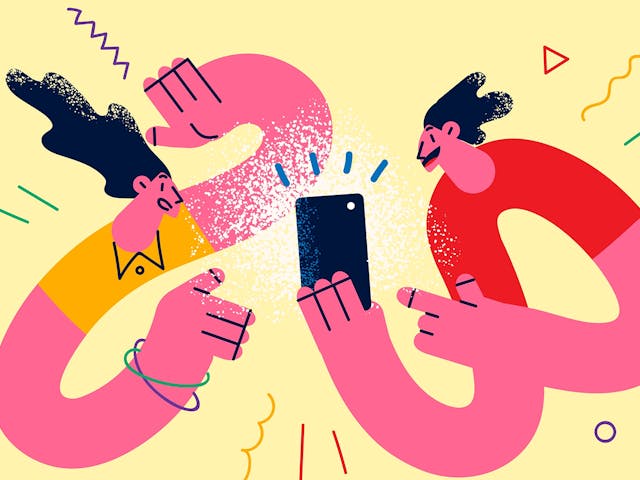TikTok is coming for Google’s gig, as the kids might say.
Translated, it means that the video-based social media platform is biting into the search engine’s popularity.
Last fall, TikTok surpassed Google as the most-visited site on the web. A top Google leader said during Fortune’s Brainstorm Tech conference this summer that nearly 40 percent of young people—ages 18 to 24—are turning to visual-based social media platforms like TikTok or Instagram for their internet searches.
About two-thirds of teens say they have used TikTok with 16 percent of those saying they use it almost constantly, according to a recent Pew study of 13- to 17-year-olds. That makes it second only to YouTube in social media popularity.
With the video app that launched a thousand dance crazes elbowing in on Google’s turf among young internet users, is any of that transformation bleeding over into students’ academic searches? Are they turning to TikTok for school research papers, for instance?
The educators we asked responded with a resounding—nope.
Emily Wilt, a high school library media specialist in Indiana who runs her library’s TikTok account, meets with upperclassmen at the start of each school year to talk about research best practices. She says that the junior and senior advanced composition students she’s met with this year told her Google is their go-to resource for academic work. Wilt speculates it’s personal learning pursuits, not those related to school, that have them turning to TikTok.
@chsbookmasters Reader's Advisory 101 #colorchallenge #librarianlife #tiktoklibrary #booktok ♬ Colors - Stella Jang
Even if students were using TikTok or YouTube for their assignments, Wilt says that would be fine.
“I see our society becoming increasingly visual,” she says, “so I've been trying to work withsome of my colleagues to remind them that research sources don't have to just be text-based. There might be some audio-based resources or some videos that are still legitimate information that students can cite.”
The challenge presented by TikTok, Wilt says, lies in its unique ability to serve up highly personalized content and foster trust between creators and viewers.
“Whoever shows up on your For You page seems like your friend,” she says, referring to TikTok’s recommended content for each user. “I think when we see videos show up on For You pages or searches, the way the app is formatted, it triggers that subconscious, ‘I can trust them, they’re my friend.’”
Unlike using a web browser, where users can quickly search an author’s name or organization in a new tab, TikTok keeps users in the app, she explains. Aside from looking at a creator’s username and bio, there’s not much users can do to verify information within the app.
“It’s much easier to continue scrolling than to get out, open a browser window, and toggle back and forth to do fact checking,” Wilt says.
Andrea Keller, a high school librarian in Texas, says she joined TikTok after seeing the popularity of its dance challenges among her students. It’s given her some street cred to stay up with the latest memes, and it’s helped her keep up with viral books that students want to read. As for crossover with their assignments?
“I haven’t seen my kids use it for their own research, [but] they're not saying, ‘Hey, Ms. Keller, look what I found on TikTok for education,’” she says.
@akbusybee #booktok #booktoktuesday #internationaldotday #dotday2022 @peterhreynolds #tokstarlibrarians #librariansoftiktok #txasl #librarian #bookrecommendations #bookrecs📚 #booktalk ♬ Here Comes the Sun - Relaxing Instrumental Music
Being active on social media—Keller has followings on Twitter and Instagram, as well—is a useful tool when it comes time to talk to students about digital citizenship, however. Students are going to find a wide spectrum of viewpoints on the internet, she tells them, but they have to be able to vet the information they find.
“With TikTok, it goes back to that algorithm. They can so easily get that misinformation if they’re continually interacting with videos like that,” Keller says. “That’s why it’s important to teach that not everything out there is true—just having those real conversations so hopefully they can be better human beings and make their own decisions.”


